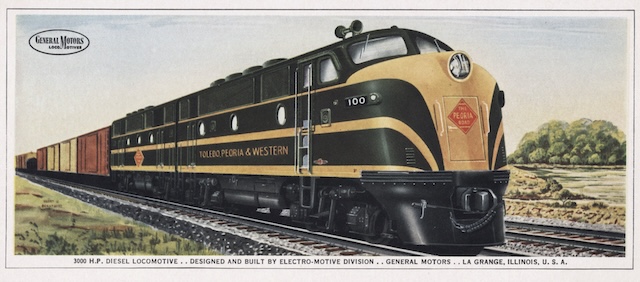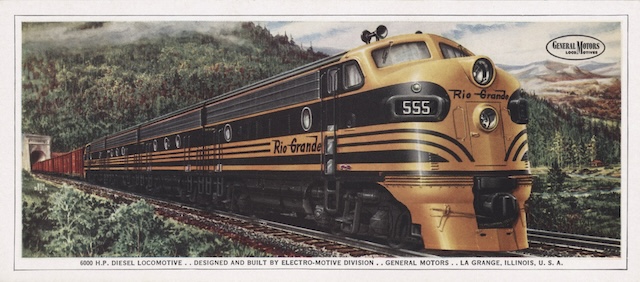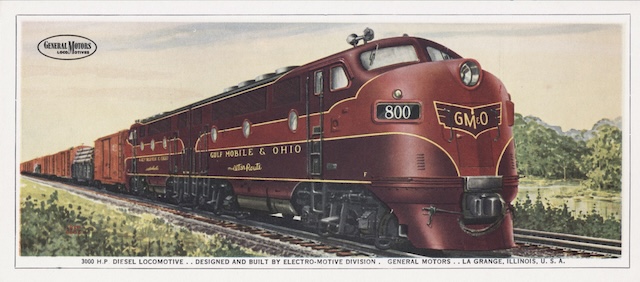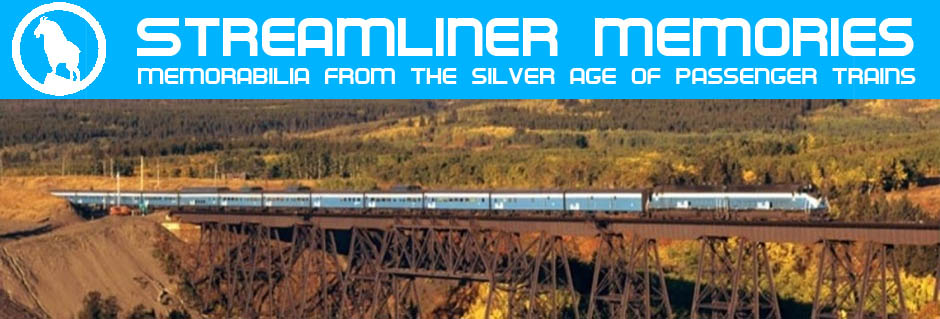After GM’s original F3 (but really F2) demonstrator, number 291, was involved in a head-on collision that totaled one of the A units, GM upgraded the other units to 1,500 horsepower. It then created a new demonstrator using two new A units plus one of the upgraded B units from the original demonstrator. Starting in September 1946, the demonstrator traveled more than 125,000 miles around the country. This helped GM sell 1,800 F3s in less than two-and-a-half years compared with fewer than 1,100 FTs that were on the market for over six-and-a-half years.

This card is signed by Ben Dedek.
In 1947, GM sold the upgraded A and one of the B units from the original demonstrator to the Toledo, Peoria and Western. They are featured in this data card. In 1950, TP&W decided it needed two A units rather than an A and B, so it bought a new A nose and cab from GM and converted the B unit to an A unit, the only time an E or F booster has been converted to a cab unit.

This card is signed by Ben Dedek.
Other than the demonstrators, some of the first F3s to roll off the production line were sold to Santa Fe in October 1946. Santa Fe 16 was the first of two dozen painted with the Warbonnets Leland Knickerbocker had designed for the E1.

This card is signed by Ben Dedek.
Rio Grande was next, receiving a dozen F3s in November 1946. Although the locomotive in the above painting is numbered 555, Rio Grande records indicate that the locomotives were delivered as three four-unit sets numbered 552, 553, and 554 A through D. Although they were later individually numbered (instead of A through D), none were ever numbered 555.

This card is signed by Ben Dedek.
In December 1946, GM delivered seven two-unit A-A sets to Gulf, Mobile & Ohio. GM&O later acquired eighteen more A units supplemented with eight B units.
